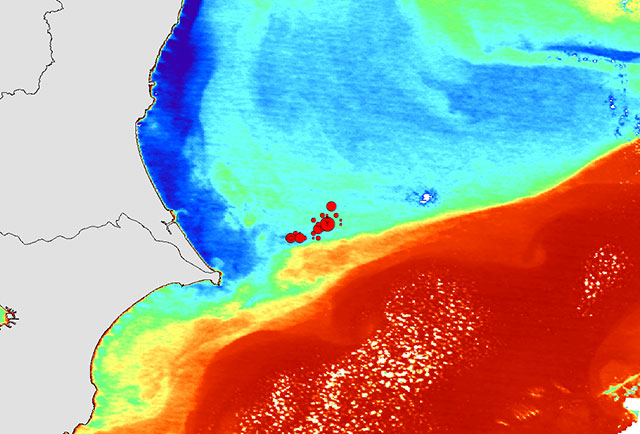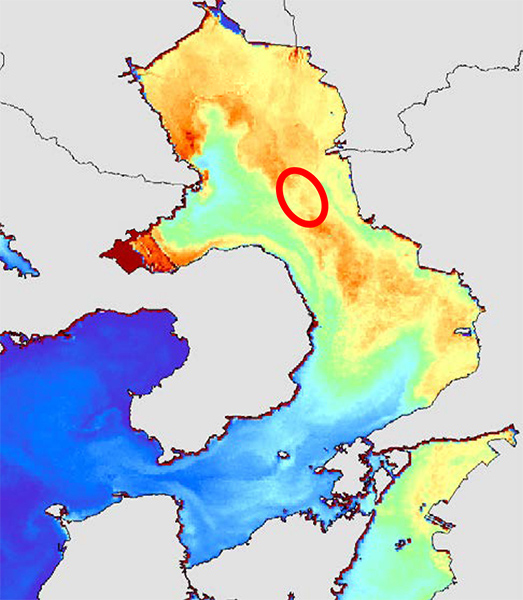Shikisai Data Stream Exploratory Measures Initiated for JAFIC
August 3, 2018 (JST)
National Research and Development Agency
Japan Aerospace Exploration Agency(JAXA)
General Incorporated Association
Japan Fisheries Information Service Center (JAFIC)
JAXA has undertaken the initial checkout and calibration*1 of Shikisai, originally known as Global Change Observation Mission-Climate (GCOM-C), to start the satellite-derived data stream service in December 2018. The operation of the Shikisai satellite has been nominal since the launch on December 23, 2017. On July 25, JAXA started the test stream service measures and has provided Japan Fisheries Information Service Center (JAFIC) with three types of nearly real time data including sea surface temperature.
Observation images from Shikisai can yield higher resolution images compared with other Earth observation satellites which provide data used for fisheries. Additionally, the satellite's multiple remote sensing, capable of simultaneous observation of ocean color and water temperature, will make the data applicable both to fisheries and marine research. Sea surface temperature in the fishing grounds and other detailed information pertaining to marine environment are expected to advance searching for productive fishing grounds. Data from Shikisai is also expected to enhance the monitoring of coastal environment, making it possible to observe seaweed beds, tidal flats, and algal blooms. It will contribute to the management of coastal marine resources and studies.
JAFIC will cooperate with JAXA in calibration and verification of the data by supplying on-site surface temperature and other data. The Center will also use the test data distribution to implement the service that provides information with stakeholders such as those engaging in commercial fishing and research institutions. JAXA will use on-site measurements for comparison provided by JAFIC and other sources and continuously ensure the ongoing checkout and calibration of the satellite.
*1: the initial checkout and calibration: satellite operation to check the accuracy of derived data and make data correction by comparing with the ground observation data
[Attachment]
Boso Peninsula

Image: Surface water temperature and the seine fishing ground as observed by Shikisai
In this image, the coolest waters appear in blue, and the warmest temperatures appear in red. Red circles are fishing spots for Japanese pilchard (Sardinops melanostictus). A band of waters at high temperature (in red) along the Japan current lies on the south of the fishing ground. Warm water (orange to green) veers north, countercurrent, off from the Japan current. Cold water (blue) is distributed along Kashima coast. This suggests fishing grounds are formed where warm waters move north.

Image 2: Chlorophyll concentrations and algal blooms
The lower the chlorophyll concentration the coder the color, the higher, the warmer. Algal blooms, commonly known as red tide occurred in the red circle, based on data from Kumamoto Prefecture Fisheries Research Center HP. High chlorophyll concentrations are visible on north and south along the inner Ariake Bay toward the offshore Kumamoto prefecture. In Isahara Bay, too, chlorophyll concentrations are high. The circle where algal blooms occurred, caused by diatoms and other organisms, is located where chlorophyll concentrations are also high.